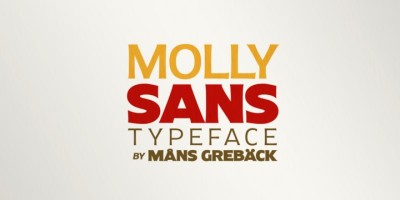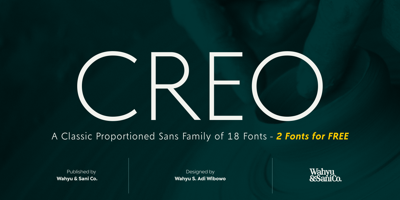Typography in American Branding: From Coca-Cola to Apple
Typography in American Branding: From Coca-Cola to Apple
Typography is the silent ambassador of American brands, shaping perceptions and driving emotional connections with millions of consumers daily. From the flowing script of Coca-Cola that has enchanted generations to Apple's minimalist San Francisco typeface that embodies digital perfection, American companies have wielded typography as a powerful tool for building iconic brand identities that transcend borders and define cultural moments.
The evolution of American brand typography tells the story of the nation itself – from the ornate confidence of the industrial age to the clean efficiency of the digital era. Understanding how America's most successful brands use typography provides invaluable insights for businesses seeking to create memorable, effective brand identities that resonate with contemporary consumers.
The Golden Age of American Typography: Classic Brand Scripts
The early 20th century established many of the typographic foundations that still define American branding today. During this era, custom lettering and elaborate scripts conveyed craftsmanship, tradition, and the optimistic spirit of American enterprise.
Coca-Cola: The Script That Built an Empire
Coca-Cola's Spencerian script, created by Frank Mason Robinson in 1885, remains one of the most recognizable typographic marks in human history. The flowing, confident strokes embody the brand's core values of refreshment, joy, and timeless American optimism. This script has survived countless redesign trends because it perfectly captures the emotional essence of the brand.
The genius of Coca-Cola's typography lies in its ability to feel both nostalgic and contemporary. The script evokes handcrafted quality and personal attention while maintaining enough flexibility to work across modern digital platforms. This balance has allowed Coca-Cola to maintain typographic consistency for over 130 years while remaining culturally relevant.
Ford: Industrial Strength in Simple Letters
The Ford logo's simple, bold lettering reflects the democratic ideals and industrial efficiency that built American manufacturing dominance. Introduced in 1903, the Ford script embodies accessibility and reliability – values that resonate with American consumers who appreciate straightforward, honest communication.
Ford's typography strategy demonstrates how simplicity can be sophisticated. The slightly condensed letterforms suggest efficiency and forward motion while remaining highly readable across all applications, from vehicle badges to digital interfaces.
General Electric: Monogram Mastery
GE's monogram represents the pinnacle of American corporate typography from the industrial age. The interlocking letters create a symbol that's both distinctive and functional, embodying the company's role as a cornerstone of American industry and innovation.
The Modern Era: Minimalism Meets Technology
As American business evolved from industrial manufacturing to technology and services, brand typography adapted to reflect new values: innovation, accessibility, and global connectivity.
Apple: The Typography of Digital Perfection
Apple's typographic journey mirrors the company's evolution from computer manufacturer to lifestyle brand. The transition from the rainbow Apple logo's casual typography to today's sleek San Francisco typeface represents one of the most successful brand typography evolutions in business history.
San Francisco, Apple's custom typeface introduced in 2015, embodies the brand's core values: clarity, precision, and human-centered design. The font's subtle curves and optimized readability across all screen sizes demonstrate Apple's obsessive attention to user experience. Every letterform has been crafted to enhance the Apple ecosystem, creating seamless experiences from iPhone screens to billboard advertisements.
The typography's technical excellence supports Apple's premium positioning while remaining approachable enough for mass market appeal. This balance has helped Apple build the world's most valuable brand through consistent typographic communication.
Google: Accessible Innovation
Google's evolution from the playful, serif-based logo of 1998 to today's clean, geometric wordmark reflects the company's maturation from startup to global infrastructure provider. The current Google typography embodies accessibility, optimism, and technological capability.
Product Sans, Google's custom font family, extends the brand's typographic personality across its vast ecosystem of products and services. The font's friendly geometry and excellent screen readability support Google's mission of organizing the world's information while maintaining the approachable character that makes technology feel human.
Microsoft: Enterprise Elegance
Microsoft's typographic transformation under Satya Nadella's leadership demonstrates how typography can support comprehensive brand repositioning. The shift from the corporate formality of earlier logos to the current clean, modern wordmark signals Microsoft's evolution into a cloud-first, mobile-first company.
Segoe UI, Microsoft's system font, creates consistency across the Microsoft ecosystem while projecting professionalism and reliability. The font's clarity and comprehensive language support reflect Microsoft's global reach and commitment to inclusive design.
Industry-Specific Typography Patterns
Different sectors of American business have developed distinct typographic languages that communicate industry-specific values and build consumer trust.
Financial Services: Trust Through Typography
American financial institutions consistently choose typography that conveys stability, trustworthiness, and authority. Banks like Chase, Wells Fargo, and Bank of America favor clean, serif-influenced typography that suggests tradition and reliability while remaining modern enough for digital applications.
The typography choices reflect the industry's need to balance innovation with security. Custom fonts like Chase's proprietary typeface system create distinctive brand identities while maintaining the conservative aesthetics that financial consumers expect.
Technology Startups: Disruption in Letters
Silicon Valley has created its own typographic vernacular that signals innovation, disruption, and forward-thinking. Companies like Uber, Airbnb, and Netflix use custom sans-serif fonts that feel approachable yet sophisticated, familiar yet distinctive.
These typography choices support the startup mythology of American entrepreneurship while building trust with users adopting new technologies. The fonts must work across digital platforms while conveying the energy and optimism that characterize American tech culture.
Fashion and Lifestyle: Typography as Art
American fashion brands use typography as a primary differentiator in crowded luxury markets. Brands like Calvin Klein, Ralph Lauren, and Coach employ typography that reinforces their positioning and appeals to aspirational consumers.
The typographic choices range from minimalist modernism (Calvin Klein) to classical elegance (Ralph Lauren), but all share a commitment to distinctive lettering that functions as brand assets in their own right.
Regional Typography Influences
American brand typography reflects regional cultural influences that add depth and authenticity to brand communication.
West Coast Innovation
California-based brands often embrace experimental typography that reflects the region's culture of innovation and creativity. The typography tends toward geometric modernism with subtle humanist touches that make technology feel approachable.
East Coast Establishment
Traditional East Coast brands favor typography that conveys heritage, authority, and institutional credibility. The fonts often reference classical proportions while incorporating modern efficiency.
Southern Hospitality
Southern American brands frequently employ typography that suggests warmth, tradition, and personal attention. Script elements and handcrafted details appear more frequently in Southern brand typography.
The Psychology Behind American Brand Typography
American brand typography operates on deep psychological levels, triggering emotional responses that influence consumer behavior and brand perception.
Cultural Associations
Different typographic styles carry cultural meanings that American consumers instinctively understand. Sans-serif fonts suggest modernity and efficiency, serif fonts imply tradition and authority, and script fonts convey personality and craftsmanship.
Emotional Triggers
Typography influences mood and perception in ways that consumers rarely consciously recognize. Bold, condensed fonts create urgency and excitement, while light, spacious fonts suggest luxury and contemplation.
Trust and Credibility
Typography choices significantly impact perceived trustworthiness. Consistent, well-executed typography builds confidence, while poor or inconsistent typography can undermine even excellent products or services.
Digital Transformation and Brand Typography
The shift to digital-first customer experiences has forced American brands to reconsider their typographic strategies for new contexts and interaction patterns.
Multi-Platform Consistency
Modern American brands must maintain typographic consistency across unprecedented numbers of touchpoints, from smartwatch screens to digital billboards. This challenge requires sophisticated font families and implementation strategies.
Interactive Typography
Digital platforms enable typography to become interactive and responsive, creating new opportunities for brand expression while maintaining readability and accessibility across diverse user contexts.
Global Digital Presence
American brands operating globally must balance local typographic traditions with consistent brand identity, creating challenges that require nuanced approaches to international typography.
Lessons for Modern Brand Building
The typographic strategies of America's most successful brands offer actionable insights for contemporary brand builders.
Consistency Compounds
Brands that maintain typographic consistency over time build stronger recognition and emotional connections. Short-term typographic trends rarely create lasting brand value.
Authenticity Matters
Typography must authentically reflect brand values and target audience preferences. Mismatch between typographic style and brand personality creates cognitive dissonance that weakens brand impact.
Quality Is Visible
Consumers can instinctively recognize quality typography, even if they can't articulate the differences. Investing in excellent typography pays dividends in perceived brand quality.
Context Drives Choice
The most effective brand typography considers all contexts where the brand will appear, from business cards to billboards to smartphone screens.
Future Trends in American Brand Typography
Variable Font Adoption
American brands are beginning to adopt variable fonts that adapt automatically to different contexts while maintaining brand consistency.
AI-Assisted Typography
Artificial intelligence tools are enabling more sophisticated typographic customization and optimization, allowing brands to personalize typography experiences.
Sustainability Considerations
Environmental consciousness is influencing typography choices, with brands considering the carbon footprint of font loading and digital typography distribution.
The typography of American brands tells the story of American business itself – from industrial confidence to technological innovation to global connectivity. Understanding these patterns provides valuable guidance for building brands that resonate with American consumers while standing the test of time.
Whether you're building the next great American brand or refining an existing identity, the lessons from Coca-Cola to Apple demonstrate that typography is never just decoration – it's a strategic business tool that shapes perception, builds emotional connections, and drives commercial success. The brands that understand and master this truth create typographic legacies that endure for generations.



